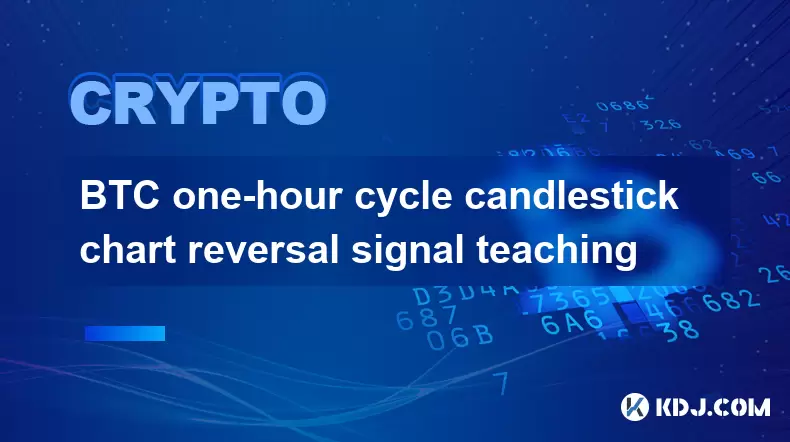-
 Bitcoin
Bitcoin $115100
1.27% -
 Ethereum
Ethereum $3675
2.71% -
 XRP
XRP $2.995
1.45% -
 Tether USDt
Tether USDt $1.000
0.02% -
 BNB
BNB $769.8
2.64% -
 Solana
Solana $168.0
3.25% -
 USDC
USDC $0.9999
-0.01% -
 TRON
TRON $0.3371
1.48% -
 Dogecoin
Dogecoin $0.2051
3.36% -
 Cardano
Cardano $0.7394
2.30% -
 Hyperliquid
Hyperliquid $38.15
0.42% -
 Stellar
Stellar $0.3966
-0.36% -
 Sui
Sui $3.486
2.93% -
 Chainlink
Chainlink $16.72
2.52% -
 Bitcoin Cash
Bitcoin Cash $568.0
4.36% -
 Hedera
Hedera $0.2440
2.59% -
 Ethena USDe
Ethena USDe $1.001
0.04% -
 Avalanche
Avalanche $22.16
2.06% -
 Litecoin
Litecoin $119.1
-0.73% -
 UNUS SED LEO
UNUS SED LEO $8.991
0.04% -
 Toncoin
Toncoin $3.232
-0.39% -
 Shiba Inu
Shiba Inu $0.00001233
2.82% -
 Uniswap
Uniswap $9.717
2.53% -
 Polkadot
Polkadot $3.664
1.85% -
 Dai
Dai $1.000
0.01% -
 Monero
Monero $281.2
-3.89% -
 Bitget Token
Bitget Token $4.350
1.55% -
 Cronos
Cronos $0.1428
5.07% -
 Pepe
Pepe $0.00001050
3.68% -
 Aave
Aave $262.3
3.54%
BTC one-hour cycle candlestick chart reversal signal teaching
Candlestick charts help traders spot Bitcoin reversal signals like Doji, Hammer, and Engulfing Patterns on one-hour cycles, aiding in timely trading decisions.
Jun 05, 2025 at 07:08 pm

Introduction to Candlestick Charts and Reversal Signals
Candlestick charts are a popular tool used by traders to analyze price movements in the cryptocurrency market, including Bitcoin (BTC). These charts provide visual representations of price action over a specific period, in this case, one-hour cycles. Understanding how to read and interpret these charts is crucial for identifying potential reversal signals, which can indicate a change in market direction. Reversal signals are patterns that suggest the current trend may be about to change, either from bullish to bearish or vice versa. This article will guide you through the process of identifying and interpreting these signals on a one-hour BTC candlestick chart.
Understanding the Basics of One-Hour Candlestick Charts
Before diving into reversal signals, it's essential to grasp the basics of one-hour candlestick charts. Each candlestick represents the price movement of BTC over one hour and is composed of a body and wicks. The body of the candlestick shows the opening and closing prices, while the wicks (or shadows) indicate the highest and lowest prices reached during that hour. A bullish candlestick has a closing price higher than its opening price, typically colored green or white, whereas a bearish candlestick has a closing price lower than its opening price, usually colored red or black. By analyzing these patterns over consecutive one-hour periods, traders can identify potential reversal signals.
Identifying Key Reversal Patterns
Several candlestick patterns are known for their ability to signal potential reversals. Some of the most common ones include the Doji, Hammer, Shooting Star, and Engulfing Patterns. Each of these patterns has unique characteristics that traders look for when analyzing one-hour BTC charts. For instance, a Doji indicates indecision in the market, with the opening and closing prices being very close or identical. A Hammer, on the other hand, suggests a potential bullish reversal after a downtrend, characterized by a small body and a long lower wick. Understanding these patterns and their implications is crucial for making informed trading decisions.
Step-by-Step Guide to Analyzing One-Hour Candlestick Charts
To effectively analyze one-hour BTC candlestick charts for reversal signals, follow these steps:
- Choose a reliable charting platform: Select a platform that offers real-time data and customizable charts, such as TradingView or Binance.
- Set the chart to one-hour intervals: Ensure your chart is set to display one-hour candlesticks to match the cycle you're analyzing.
- Identify the current trend: Determine whether BTC is in an uptrend, downtrend, or trading sideways by examining the recent price action.
- Look for reversal patterns: Scan the chart for the aforementioned patterns, such as Doji, Hammer, Shooting Star, or Engulfing Patterns.
- Confirm the signal with additional indicators: Use technical indicators like the Relative Strength Index (RSI) or Moving Averages to validate the reversal signal.
- Assess the volume: High trading volume accompanying the reversal pattern can increase the signal's reliability.
- Make a trading decision: Based on your analysis, decide whether to enter a trade, set stop-losses, and determine your target prices.
Interpreting the Doji Pattern
The Doji is a critical candlestick pattern that traders often look for when analyzing one-hour BTC charts. A Doji forms when the opening and closing prices are very close or identical, creating a cross or plus sign shape. This pattern indicates market indecision and can signal a potential reversal, especially if it appears after a prolonged trend. For instance, if a Doji forms after a series of bullish candlesticks, it may suggest that the buying pressure is waning, and a bearish reversal could be imminent. Conversely, a Doji after a series of bearish candlesticks might indicate that selling pressure is diminishing, hinting at a potential bullish reversal. Traders should pay close attention to the context in which the Doji appears and use additional indicators to confirm the signal.
The Hammer and Shooting Star Patterns
The Hammer and Shooting Star are two other essential reversal patterns to recognize on one-hour BTC candlestick charts. A Hammer forms during a downtrend and is characterized by a small body and a long lower wick, resembling a hammer. This pattern suggests that sellers pushed the price down, but buyers were able to push it back up, indicating potential bullish momentum. Conversely, a Shooting Star forms during an uptrend and features a small body and a long upper wick. This pattern indicates that buyers attempted to push the price higher, but sellers regained control, suggesting a potential bearish reversal. Both patterns are significant, but traders should confirm these signals with other technical indicators and volume analysis before making trading decisions.
Engulfing Patterns and Their Significance
Engulfing Patterns are another crucial reversal signal to identify on one-hour BTC candlestick charts. These patterns consist of two consecutive candlesticks, where the body of the second candlestick completely engulfs the body of the first. A Bullish Engulfing Pattern occurs during a downtrend and signals a potential reversal to the upside. It starts with a bearish candlestick followed by a larger bullish candlestick that engulfs it. Conversely, a Bearish Engulfing Pattern forms during an uptrend and suggests a potential reversal to the downside. It begins with a bullish candlestick followed by a larger bearish candlestick that engulfs it. These patterns are powerful indicators of a shift in market sentiment, but traders should always confirm them with additional analysis, such as volume and other technical indicators.
Frequently Asked Questions
Q: How can I differentiate between a Hammer and a Shooting Star on a one-hour BTC chart?
A: The key difference between a Hammer and a Shooting Star lies in their positions relative to the prevailing trend. A Hammer appears during a downtrend and has a small body with a long lower wick, indicating a potential bullish reversal. In contrast, a Shooting Star forms during an uptrend and features a small body with a long upper wick, suggesting a potential bearish reversal.
Q: Are reversal signals on one-hour BTC candlestick charts always reliable?
A: No, reversal signals are not always reliable. While they can provide valuable insights into potential market shifts, traders should use additional technical indicators and consider the overall market context to increase the accuracy of their predictions. High trading volume accompanying the reversal signal can also enhance its reliability.
Q: Can I use reversal signals for both short-term and long-term trading strategies?
A: Yes, reversal signals on one-hour BTC candlestick charts can be used for both short-term and long-term trading strategies. For short-term trading, these signals can help identify quick entry and exit points. For long-term trading, they can be used to confirm broader market trends and adjust positions accordingly. However, the effectiveness of these signals may vary depending on the timeframe and market conditions.
Q: How important is volume when analyzing reversal signals on one-hour BTC charts?
A: Volume is a critical factor when analyzing reversal signals on one-hour BTC charts. High trading volume accompanying a reversal pattern can increase its reliability, as it indicates strong market participation and conviction in the price movement. Conversely, low volume may suggest a lack of interest and could result in a false signal. Therefore, traders should always consider volume alongside candlestick patterns and other technical indicators.
Disclaimer:info@kdj.com
The information provided is not trading advice. kdj.com does not assume any responsibility for any investments made based on the information provided in this article. Cryptocurrencies are highly volatile and it is highly recommended that you invest with caution after thorough research!
If you believe that the content used on this website infringes your copyright, please contact us immediately (info@kdj.com) and we will delete it promptly.
- HashFlare Founders Face the Music: Jail Time Looms?
- 2025-08-07 14:30:12
- Toshi on Binance.US: A Memecoin's Big Break
- 2025-08-07 14:30:12
- Bitcoin, SPAC Mergers, and Parataxis: A New Yorker's Take on Crypto's Wall Street Moment
- 2025-08-07 14:50:27
- Bitcoin, Collateral, and Loan Strategies: A New York Minute on the Future of Finance
- 2025-08-07 14:50:27
- Ethereum's Bullish Surge: Reclaiming Crypto Leadership, a New York Minute
- 2025-08-07 14:55:12
- BlockDAG, Litecoin, and Cardano: Charting the Course in Crypto's Dynamic Waters
- 2025-08-07 09:09:06
Related knowledge

Can the Bitcoin protocol be changed?
Aug 07,2025 at 01:16pm
Understanding the Bitcoin ProtocolThe Bitcoin protocol is the foundational set of rules that govern how the Bitcoin network operates. It defines every...

How does Bitcoin handle scalability issues?
Aug 07,2025 at 10:54am
Understanding Bitcoin’s Scalability ChallengeBitcoin’s design prioritizes decentralization, security, and immutability, but these principles come with...

Do you need to understand technology to use Bitcoin?
Aug 07,2025 at 06:17am
Understanding the Basics of BitcoinTo engage with Bitcoin, one does not need a deep understanding of the underlying technology, much like how individu...

Can your Bitcoins be stolen?
Aug 07,2025 at 03:28am
Understanding the Security of Bitcoin OwnershipThe decentralized nature of Bitcoin means that no central authority controls the network, placing the r...

How does Bitcoin compare to gold?
Aug 07,2025 at 03:18am
Historical Context and Origins of Bitcoin and GoldUnderstanding the comparison between Bitcoin and gold begins with their origins and historical roles...

Can you lose money with Bitcoin?
Aug 07,2025 at 07:49am
Understanding the Volatility of BitcoinBitcoin is known for its extreme price volatility, which is one of the primary reasons investors can lose money...

Can the Bitcoin protocol be changed?
Aug 07,2025 at 01:16pm
Understanding the Bitcoin ProtocolThe Bitcoin protocol is the foundational set of rules that govern how the Bitcoin network operates. It defines every...

How does Bitcoin handle scalability issues?
Aug 07,2025 at 10:54am
Understanding Bitcoin’s Scalability ChallengeBitcoin’s design prioritizes decentralization, security, and immutability, but these principles come with...

Do you need to understand technology to use Bitcoin?
Aug 07,2025 at 06:17am
Understanding the Basics of BitcoinTo engage with Bitcoin, one does not need a deep understanding of the underlying technology, much like how individu...

Can your Bitcoins be stolen?
Aug 07,2025 at 03:28am
Understanding the Security of Bitcoin OwnershipThe decentralized nature of Bitcoin means that no central authority controls the network, placing the r...

How does Bitcoin compare to gold?
Aug 07,2025 at 03:18am
Historical Context and Origins of Bitcoin and GoldUnderstanding the comparison between Bitcoin and gold begins with their origins and historical roles...

Can you lose money with Bitcoin?
Aug 07,2025 at 07:49am
Understanding the Volatility of BitcoinBitcoin is known for its extreme price volatility, which is one of the primary reasons investors can lose money...
See all articles

























































































